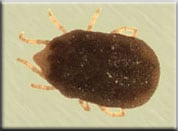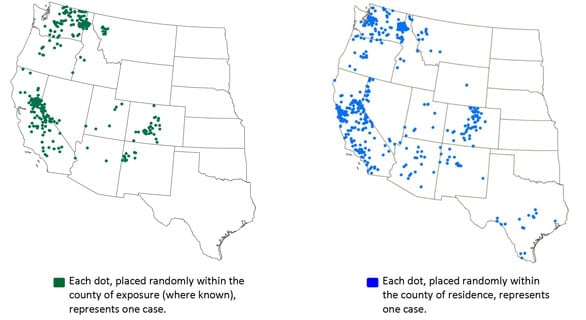Distribution

O. hermsi tick.
TBRF is found in discrete areas throughout the world, including mountainous areas of North America, plateau regions of Mexico, Central and South America, the Mediterranean, Central Asia, and much of Africa.
In the United States, TBRF occurs most commonly in 14 western states: Arizona, California, Colorado, Idaho, Kansas, Montana, Nevada, New Mexico, Oklahoma, Oregon, Texas, Utah, Washington, and Wyoming.
TBRF is spread by multiple tick species, each of which has a preferred habitat and set of hosts. Ornithodoros hermsi, the tick responsible for most cases in the United States, prefers coniferous forests at altitudes of 1500 to 8000 feet where it feeds on tree squirrels and chipmunks. The two other U.S. tick species that transmit TBRF, O. parkeri and O. turicata, are generally found at lower altitudes in the Southwest, where they inhabit caves and the burrows of ground squirrels, prairie dogs, and burrowing owls.
Most TBRF cases occur in the summer months when more people vacationing and sleeping in rodent-infested cabins. Nevertheless, TBRF can also occur in the winter months. Fires started to warm a cabin are sufficient to activate ticks resting in the walls and woodwork.

(Click for pdf version pdf icon[PDF – 1 page]) During the years 1990-2011, 483 cases of TBRF were reported in the western U.S., with infections being transmitted most frequently in California, Washington, and Colorado.